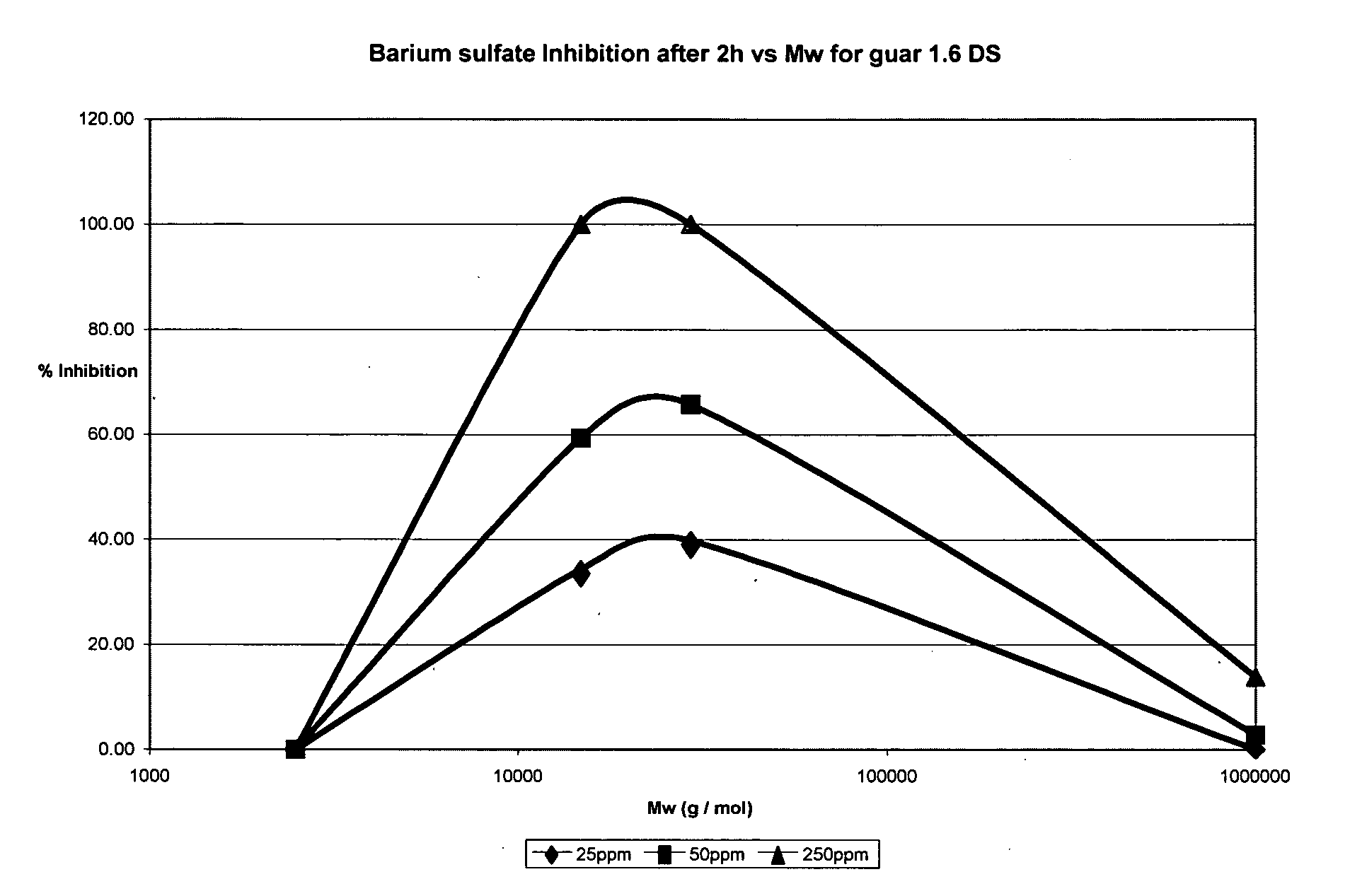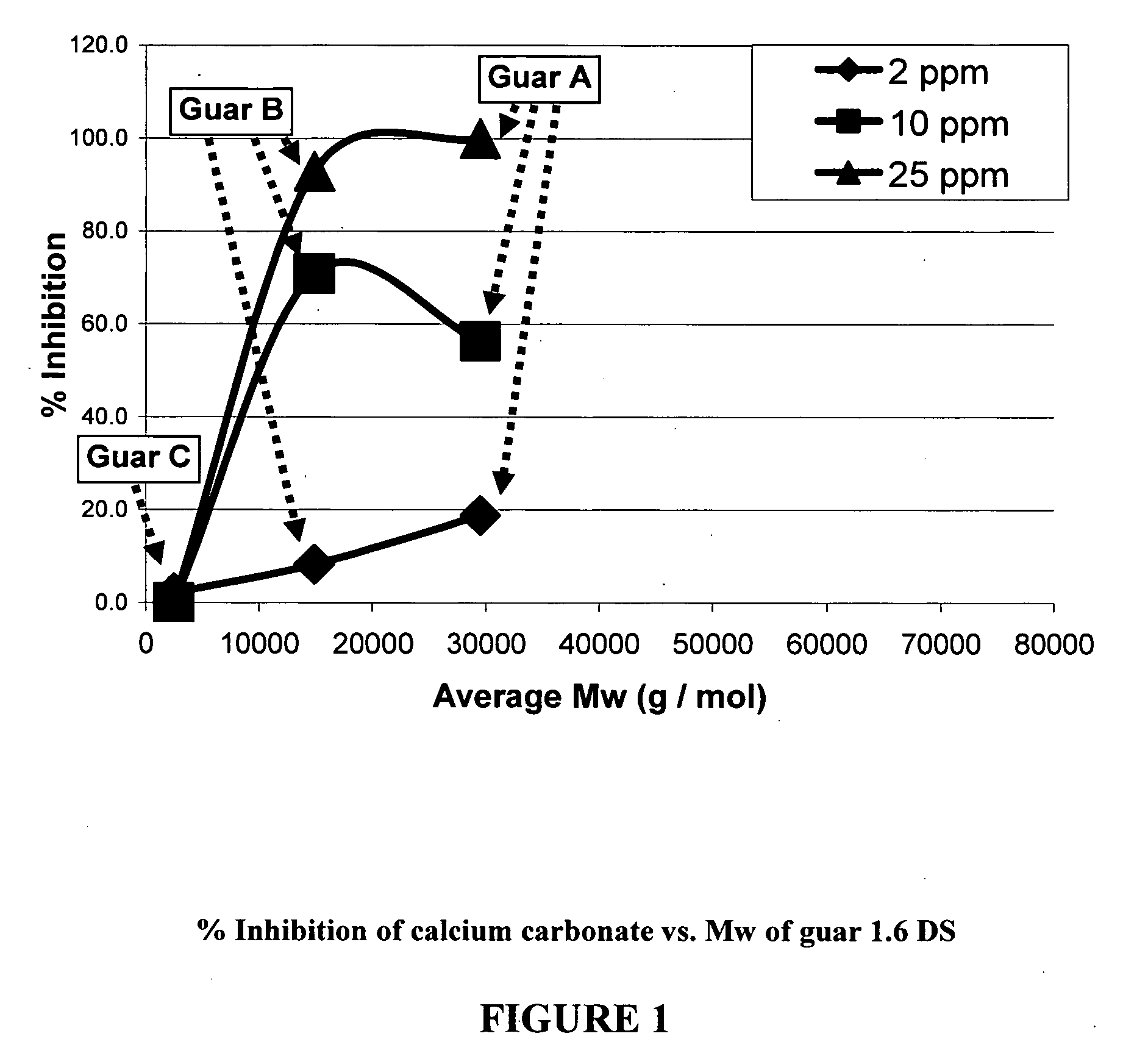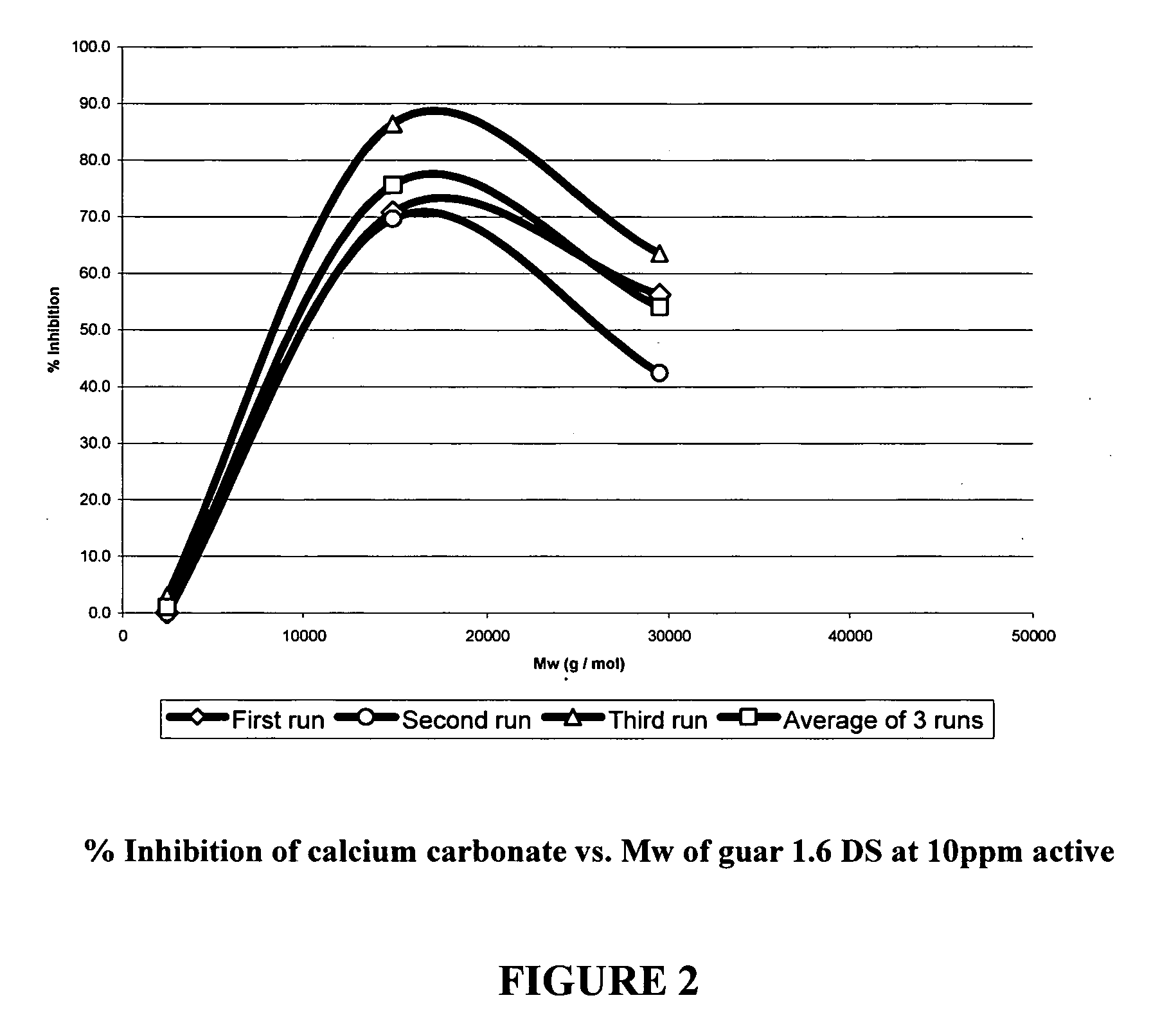Polysaccharide based scale inhibitor
a polysaccharide and scale inhibitor technology, applied in the field of scale and corrosion inhibitors, can solve the problems of large acid quantity, increased corrosion, and common scale problem, and achieve the effects of reducing the level of scale, preventing or reducing the scale in the production, and reducing the amount of polysaccharid
- Summary
- Abstract
- Description
- Claims
- Application Information
AI Technical Summary
Benefits of technology
Problems solved by technology
Method used
Image
Examples
example i
Depolymerization of Carboxymethyl Guar
Depolymerization of Carboxymethyl Guar 1.6 DS
[0061]Procedure
[0062]A 10% solution of carboxymethyl guar (commercial grade Meyprogum R-600 from Danisco) was prepared using 2% potassium chloride solution. Meyprogum R-600 is a high substituted carboxymethyl guar with a degree of substitution (DS) of 1.6. The guar solution was then mixed with different amounts of 30% H2O2 and placed in an oven at 66° C. (150° F.) for 3 to 24 h. Such a treatment allows depolymerizing the guar polymer to different extent by oxidative cleavage. The conditions used to prepare three different depolymerized guar samples are summarized in Table 1.
TABLE 1Depolymerization conditions of Meyprogum R-600-Guar 1.6 DSGuar DGuar AGuar BGuar C(control)Meyprogum R-60011 g10 g10 g 5 g 2% KCl solution97 g80 g60 g102 g30% H2O2 3 g10 g30 gNATime (h)2424 3NA
[0063]Analyses
[0064]The samples were dissolved in the mobile phase at 0.5% by weight and filtered through 0.45 μm PVDF filters prior ...
example ii
Method:
[0075]Seawater and Formation water are prepared as shown in Table 5 and 6.
TABLE 5Formation water compositionSaltIonppmSalt (g / L)NaClNa+3127579.50CaCl2,2H2OCa2+20007.34MgCl2,6H2OMg2+7396.18KClK+6541.25BaCl2,2H2OBa2+2690.48SrCl2,6H2OSr2+87.62.35
TABLE 6Seawater compositionSaltIonppmSalt (g / L)NaClNa+1089027.7CaCl2,2H2OCa2+4281.57MgCl2,6H2OMg2+136811.44KClK+4600.88BaCl2,2H2OBa2+00.00SrCl2,6H2OSr2+00.00Na2SO4 anhydrousSO42−26903.98
[0076]Inhibitors solutions of a 10,000 ppm were made up in DI water in 100 ml volumetric flask. 50 ml of seawater were transferred into a plastic bottle along with the appropriate amount of inhibitor solution (0.3 or 0.15 mL). A blank and a control were also prepared. The blank was made of 50 ml of seawater without any inhibitor while the control was made of 50 ml of DI water. In as many 125 mls plastic bottles as bottles of inhibitor stock solutions, 50 ml of formation water were placed using a measuring cylinder and buffered at pH=5.5 usin...
example iii
[0085]50 gm of 0.9 DS carboxymethyl guar (CMG-0.9) was dissolved in 950 gm of 2% potassium chloride solution to make a 5% polymer solution. 100 gm of the 5% polymer solution was put in several jars and depolymerized using different levels of 30% H2O2 by heating in an oven at 75° C. for 24 hours. The amount of peroxide used to depolymerize and the resulting molecular weight are tabulated in Table 8. Each of the samples was tested for calcium carbonate scale inhibition using NACE test method TM-0374-2001 as detailed in example 1 at a CMG-0.9 concentration of 10 ppm. The calcium inhibition results are tabulated in Table 8.
TABLE 8Scale inhibition as a function of molecular weight for 0.9 DScarboxymethylguar(CMG-0.9)Amount of 30%Weight average% Calcium carbonate inhibitionH2O2 added to100molecular weight,at polymer concentration dosagegm solutionMwof 10 ppm0.01 gm 266,000640.02 gm 174,000610.05 gm 83,100740.1 gm50,200940.2 gm21,600660.5 gm8,770641.5 gm3,150572.0 gm2,340463.0 gm1,7707
PUM
| Property | Measurement | Unit |
|---|---|---|
| Temperature | aaaaa | aaaaa |
| Temperature | aaaaa | aaaaa |
| Fraction | aaaaa | aaaaa |
Abstract
Description
Claims
Application Information
 Login to View More
Login to View More - R&D
- Intellectual Property
- Life Sciences
- Materials
- Tech Scout
- Unparalleled Data Quality
- Higher Quality Content
- 60% Fewer Hallucinations
Browse by: Latest US Patents, China's latest patents, Technical Efficacy Thesaurus, Application Domain, Technology Topic, Popular Technical Reports.
© 2025 PatSnap. All rights reserved.Legal|Privacy policy|Modern Slavery Act Transparency Statement|Sitemap|About US| Contact US: help@patsnap.com



